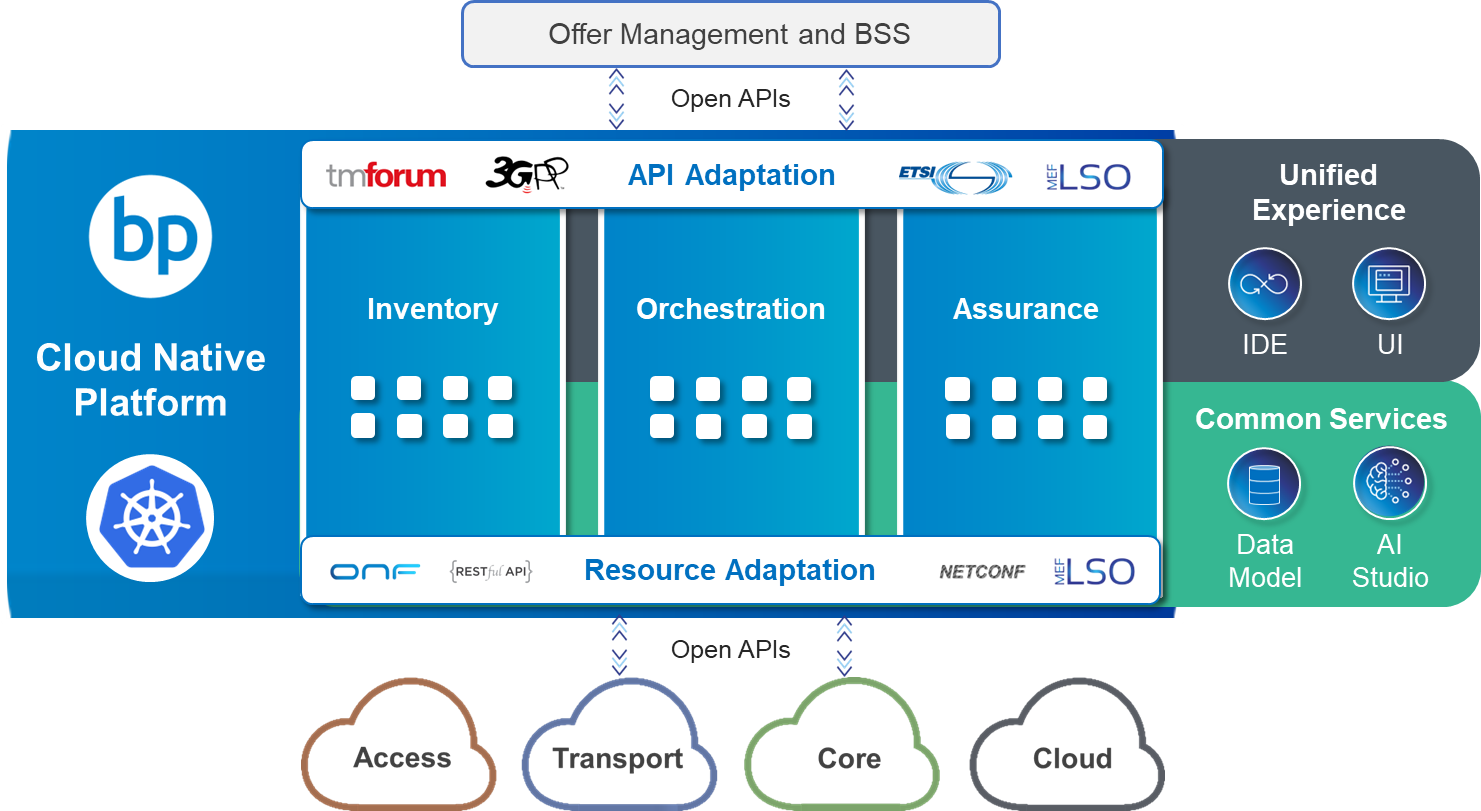What is cloud-native OSS?
Cloud native is a modern approach to software design, deployment, and management that is ideal for dynamic environments, making it a logical foundation for state-of-the-art OSS and automation solutions that are needed to power today’s hyper-complex and hyper-scale telecom networks.
Rethinking the OSS
Over the past decade, communications service providers (CSPs) have re-architected their networks—and made massive investments in 5G infrastructure—to efficiently support ever-increasing mobile video consumption, the widespread adoption of smart-devices, and intensifying demand for enterprise services that adhere to stringent SLAs.
Of course, it takes more than infrastructure to profitably create, deliver, and assure compelling new services. In fact, this is the primary role of the operations support system or OSS. Today, outdated OSS, which consist of multiple layers of technology and service-specific applications cobbled together with closed interfaces, is constraining service innovation and preventing CSPs from achieving their business goals.
Instead of perpetuating the limitations of legacy OSS approaches, forward-looking CSPs are seeking solutions that use cutting-edge cloud technology, modern software design, and automation to drive zero-touch service lifecycle automation in a closed loop at carrier scale.
The rise of cloud-native OSS
Cloud native is a state-of-the art approach to building, deploying, and managing software applications that provides the scalability, flexibility, and resiliency that CSPs need to efficiently operate their massive, complex, and constantly evolving, cloud-native networks.
Unlike legacy OSS built on archaic monolithic software architectures, cloud-native OSS take full advantage of advanced container- and microservices-based technologies that are ideal for highly dynamic network and service environments.
- Microservices are small, modular, and independent software components that address a specific task within a process; they can be scaled independently and can be orchestrated to work together to address a multi-faceted process.
- Containers are software components that decouple the cloud-native OSS from the underlying operating system and hardware that it runs on.
Cloud-native OSS advantages
Cloud-native OSS brings several major innovations that ensure scalable and efficient operations that support your strategic business goals. Here is a brief list of significant differentiators and how they improve things in comparison with traditional OSS approaches.
- Flexible deployment options. Cloud-native OSS is designed for the cloud and is easily deployed on-prem, in private or public clouds, and in hybrid combinations of these environments. Legacy OSS was designed for on-premises deployment only; while vendors may choose to rehost their legacy OSS to run in the cloud (aka cloud-enabled OSS), this merely changes where the OSS is sited.
- Simple, rapid feature development. Cloud-native OSS permits low code/no code enhancements using DevOps methodologies and graphical development tools, which greatly simplifies new feature development and supports a continuous integration/continuous deployment (CI/CD) model. This is a major improvement over legacy OSS, which require costly vendor-led development and customization.
- Easy to maintain and update. The microservices-based architecture of cloud-native OSS permits rapid non-disruptive updates with minimal effort, allowing the painless adoption of new and enhanced features based on business drivers. In contrast, upgrading a legacy OSS is a slow, risky, and expensive process that requires the test and redeployment of the entire application for even minor updates.
Cloud native or cloud enabled?
Cloud-native OSS is designed for the cloud and fully leverages cloud technologies to meet the scale, resiliency, and agility needs of modern networks and services. Cloud-enabled OSS is legacy software that has been modified to run in the cloud but can't take full advantage of all the cloud offers because it is based on an inflexible monolithic architecture.
Modernize your OSS with the Blue Planet Cloud Native Platform
Blue Planet helps CSPs accelerate their transformation to software-driven digital businesses with the industry’s first cloud-native OSS platform that converges modular inventory, orchestration, and assurance applications. Our state-of-the-art platform ensures operational consistency across applications and provides operators and developers with a unified experience, and our applications can be deployed individually to address specific challenges or in combination to provide zero-touch network and service lifecycle automation.
Built on a ultra-modern Kubernetes-based architecture, the Blue Planet Cloud Native Platform (CNP) can be deployed on premises, in any private or public cloud—including AWS, Google, Microsoft and even in any multi-cloud mix of public and private clouds—with complete feature consistency. In addition to deployment flexibility, Blue Planet CNP also provides cloud-native support services that streamline the transition and ensure interoperability.

Blue Planet’s Cloud Native Platform and applications
Importantly, our Blue Planet CNP also supports in-service software updates. CSPs can break free from the high risks and costs associated with traditional software upgrades and move toward a CI/CD model that accelerates the pace of innovation and creates competitive differentiation.
Blue Planet is helping CSPs navigate the challenges of OSS modernization, and the Blue Planet CNP applications automate and optimize operations and streamline new service introductions across complex multi-vendor, multi-domain, multi-cloud networks to drive success in highly competitive and rapidly evolving markets—for today and tomorrow.

